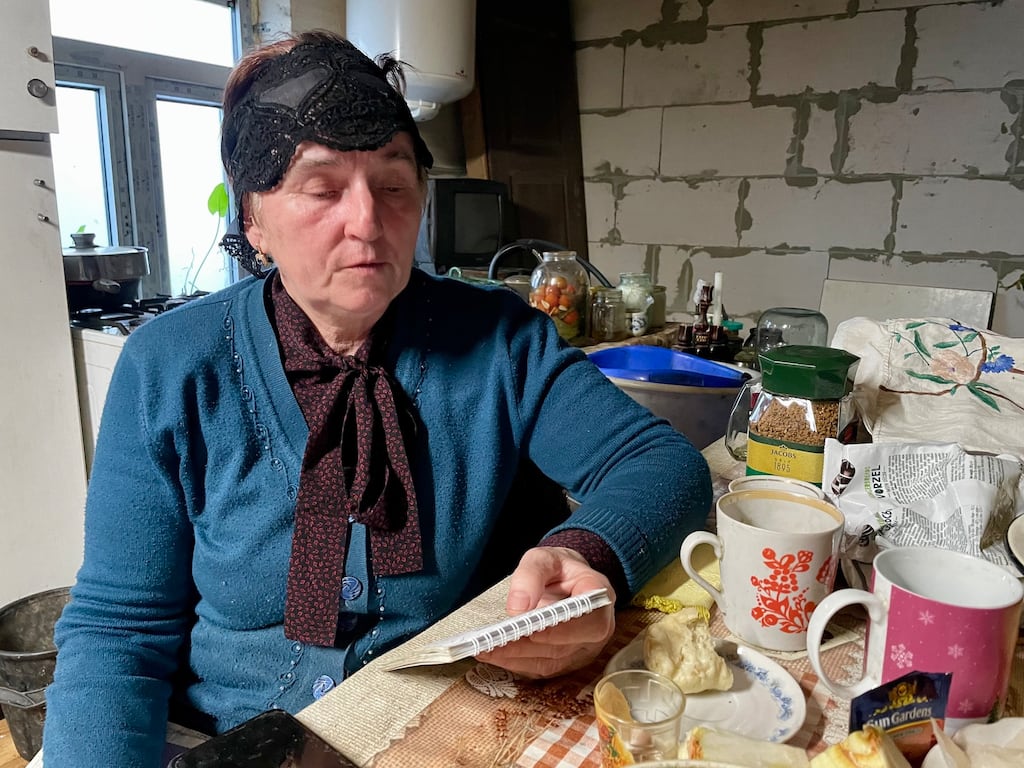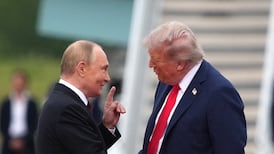Nelya Honchar’s house was destroyed during Russia’s occupation of Kozarovychi near Kyiv three years ago, but a small thing that survived tells the story of the village’s ordeal as the Kremlin’s invasion force tried – and failed – to seize the capital of Ukraine.
She kept a diary of five weeks of occupation and ultimate liberation, when Ukraine’s soldiers, volunteer fighters, drone pilots and others stopped Russia’s advance in places north of Kyiv such as Bucha, Irpin and Hostomel, where key battles to protect the city took place and Moscow’s troops committed a litany of atrocities including war crimes.
Honchar (59) was on the night shift in the boiler room of a school in Kozarovychi when Russian president Vladimir Putin ordered his troops, tanks and warplanes over the border into pro-western Ukraine in the early hours of February 24th, 2022.
“One of my sons rang at about 3am and said Russia was invading. He told me to turn the boilers down, leave work and go home immediately. But I couldn’t believe it. And my shift wasn’t due to end until eight o’clock, so I stayed,” she recalls.
RM Block
“At about 7.40, when I was getting ready to leave, I went outside and a Russian helicopter came flying overhead like something out of a film, low over the village with its side door open and firing at the ground and into the air.”
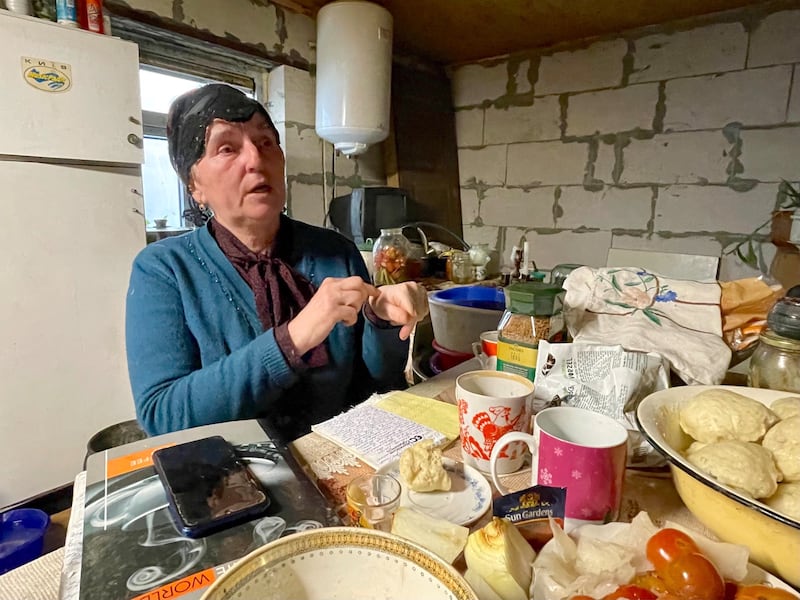
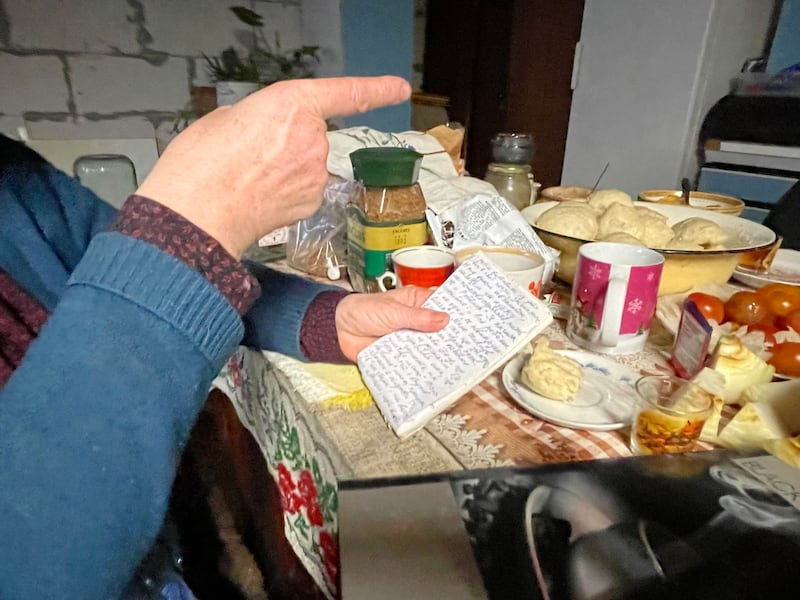
Kozarovychi is in a strategic spot 35km from Kyiv, near one of the few major roads into the capital from the north and on the banks of a large reservoir on the Dnipro river that locals call the “Kyiv sea”. It is also just 30km from Hostomel airport, a priority target for Russia’s helicopter-borne paratroopers at the start of the invasion, which sits just north of Kyiv commuter suburbs such as Irpin, Bucha and Vorzel.
With helicopters and fighter jets tearing over the village and Russian soldiers moving in from the Belarusian border 100km away, Honchar says it took her 2½ hours to get home from the school via back lanes and gardens: “I didn’t walk, I crawled. And I thanked God that I’d made it home alive.”
Russian units quickly entered and set up checkpoints in Kozarovychi, parked tanks and armoured personnel carriers on its streets, dug trenches for soldiers in people’s gardens and put artillery guns next to people’s houses.
“They put a cannon right behind our house and it fired day and night ... They moved the gun one way to fire at Hostomel, moved it a bit to fire at Bucha and Irpin, moved it another way to aim at the pumping station by the Kyiv sea,” Honchar says.
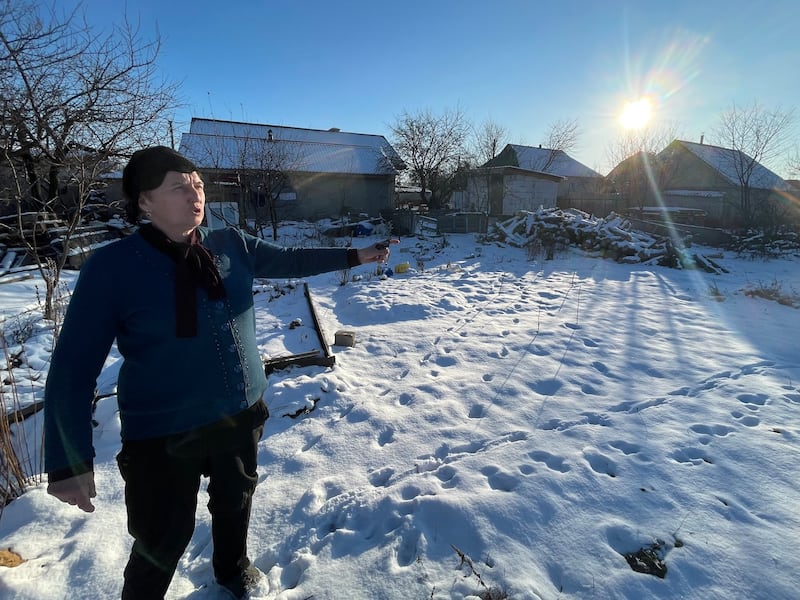
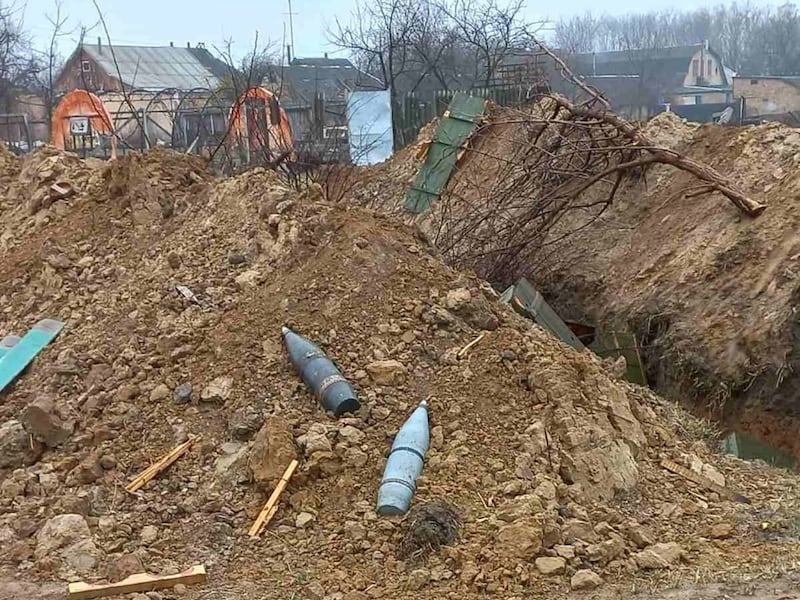
“The bloody Russians told us we were just cannon fodder, human shields to protect them, because our lads would return fire towards their positions.”
A Kyiv-based group of drone enthusiasts and technicians, some with military experience, had planned a training day on February 24th to prepare for a possible all-out Russian invasion. When it actually began that morning, the group, called Aerorozvidka (Aerial Reconnaissance), went into action with whatever it had to hand.
“As it turned out, everything started kicking off just a few kilometres from my house in Vorzel, with a big attack on Hostomel airport,” says the head of Aerorozvidka, Yaroslav Honchar. The surname he shares with Nelya means “potter” in Ukrainian, but they are not related.
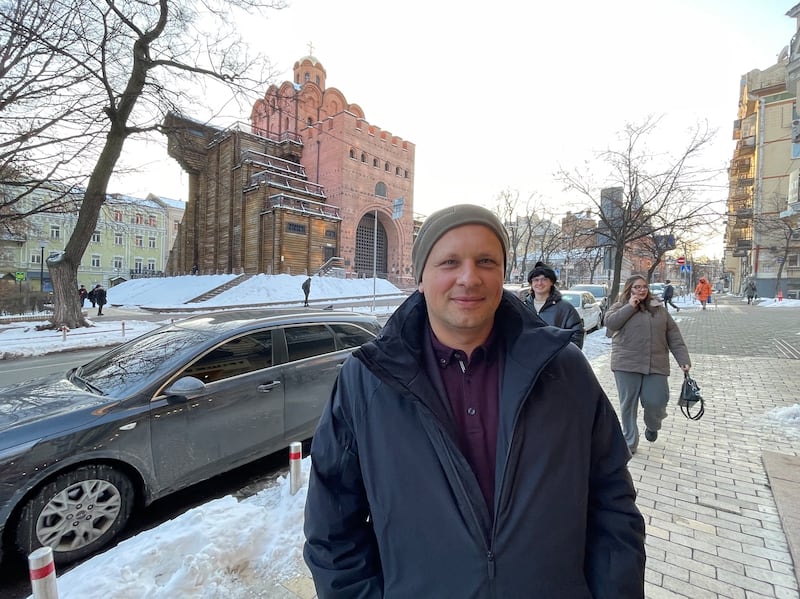
“We had a few drones at the workshop, no more than 10 ... but we collected them and went to work.”
Honchar and his team sourced some grenades and quickly rigged up Aerorozvidka’s R-18 octocopter to drop them on the enemy – which they did the following night at Hostomel.
The defence of Kyiv was chaotic: thousands of volunteers joined self-defence forces and some went straight into battle, and co-ordination between different units was not always smooth – Honchar recalls Aerorozvidka spotting a huge gathering of Russian vehicles near Hostomel, only for artillery fire to miss them completely.
“We became a space where anyone who wanted to defend could join in,” says Honchar, who is now chief executive of an expanded Aerorozvidka that works closely with the armed forces as a registered non-governmental organisation.
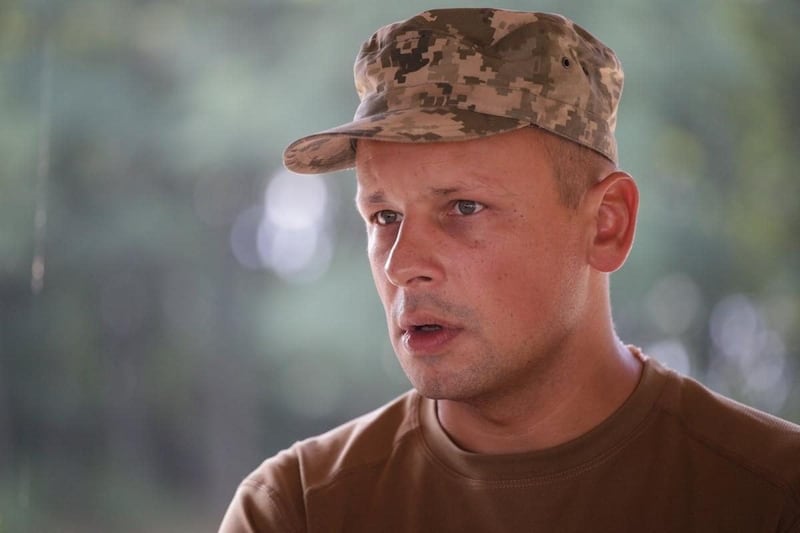
“We could give a task to anyone with a drone in Kyiv. And we had people collecting and disseminating all the data coming in about where the Russians were, using photographs and maps. People with hobby drones didn’t wait for orders, they just went flying and found the enemy and sent us the images,” he adds.
“We also posted videos from drones to inspire people across the country, because they were terrified. We said look how we’re fighting back, how they’re falling apart – how we’ll get rid of them.”
Ukraine’s remarkable victory at Hostomel against elite enemy airborne units prevented Russia from seizing a large airfield on the edge of Kyiv, where it could have landed planeloads of reinforcements and armoured vehicles to attack the capital.
Drones captured footage of long columns of Russian vehicles being shelled by Ukrainian artillery, as Moscow’s plans for the quick capture of Kyiv evaporated and its troops dispersed into northern suburbs like Bucha, where they tortured, raped and killed local residents before retreating through Belarus to Russia at the end of March.
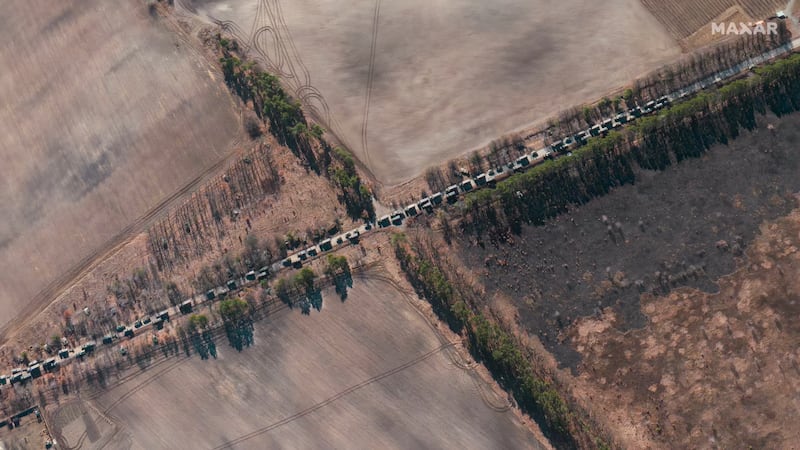
Nelya Honchar took about 20 neighbours, including several children, into her home when Russian troops commandeered their houses in Kozarovychi. She was concussed by an artillery strike and says the children in particular were terrified by the constant boom of the cannon stationed in her garden.
“They’d fall to the floor and cry. The first nights were terrible and I don’t think they slept at all. It felt like the house jumped in the air every time the cannon fired.”
The Russians would search the house and its occupants, making the men strip to their underwear and crawl through the yard to the garage. Honchar says she begged for permission to visit one of her sons in a nearby village, but the Russians refused, and on one occasion a soldier put a gun to her head: “‘Shut your mouth, nun,’” he said, because he didn’t like me praying. People thought they were going to shoot me.”
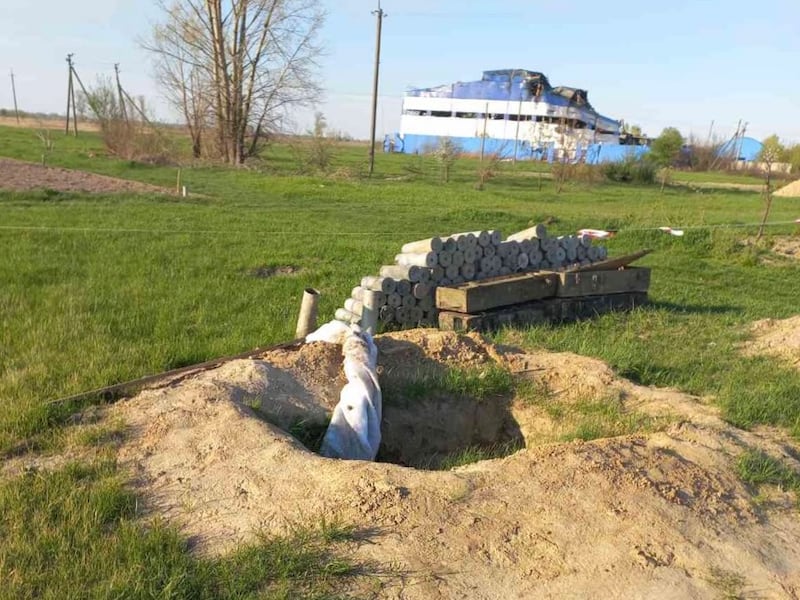
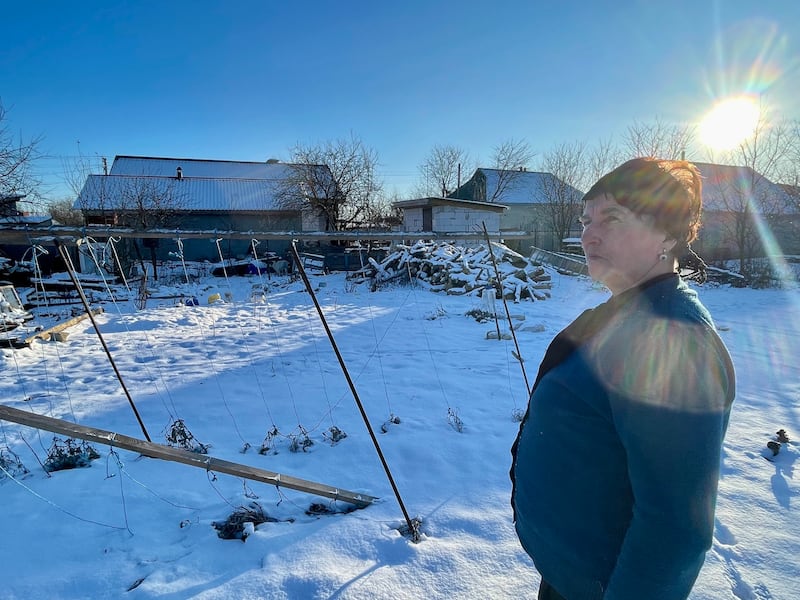
The neighbours sheltering with Honchar had moved elsewhere and she was handing out humanitarian aid at the village church, when a Ukrainian strike on the Russian artillery post in her garden destroyed her house on March 17th 2022.
Two weeks later, following heavy strikes on their base and positions in Kozarovychi, the Russians pulled out as part of their full retreat from Kyiv region.
Yaroslav Honchar returned to Vorzel, where his mother had spent 42 days under Russian occupation.
“It was a new and horrible feeling, going back to your hometown that the enemy had occupied, and thinking you won’t stop until you’ve killed them all because they held your own family hostage and did horrific things in Kyiv region,” he says.
“Thankfully they didn’t search our house fully because half my books are about how to fight the Russians,” he adds. “I work with technology but somehow left my laptop at home on February 24th. My mum buried it in the garden. But it survived occupation, and so did she.”
